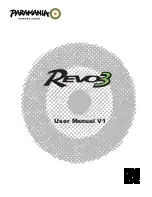
19
Balancing: The recommended starting balance (CG) point of the 47” Extra is 3.5 inches behind the
leading edge of the wing measured at the root of the wing, where the wing meets the fuselage.
This is a conservative CG location, excellent for sport flying or precision flight. For 3D flying, you may
wish to move your CG back. If you do so, move it in small increments, a small change can have a large
effect.
An easy way to verify your CG settings during tuning is to do the “roll inverted” test. Trim your plane for
perfect upright hands-off flight. Then, with sufficient altitude, at ¾ throttle, roll inverted and release the
controls. Your airplane should very gently descend. If instead, it climbs, it is far too tail-heavy. If it dives
sharply, it is too nose heavy.
Scott’s Tip:
Control Throws and Exponential
Setting appropriate control throws is a critical step in matching your model to your
flying style. Personally, I use two different flight “modes”– precision and 3D. Depending upon
your radio, you may be able to combine all three dual rate functions onto a single switch, which
is the technique I use. Regardless, be sure to use a common assignment scheme to prevent
being in the wrong rate at the wrong time. I prefer my switches to be higher for high rates and
lower for low rates, but virtually any combination will work – just be comfortable with your
setup.
Low/Precision Rates (in degrees and inches) and Corresponding Exponential
Aileron
15 degrees
.75” 30% Expo
Elevator
13 degrees
1.25” 30% Expo
Rudder
45
degrees
3.5”
75%
Expo
High/3D Rates (in degrees and inches) and Corresponding Exponential
Aileron 28
degrees
1.25”
75%
Expo
Elevator 45
degrees
3”
85%
Expo
Rudder
45
degrees
3.5”
75%
Expo
The above throw measurements were taken at the aft edge of the ailerons and elevator,
and from the bottom aft edge of the rudder. Keep in mind that even the low throws mentioned
here are relatively aggressive, so be sure to also program the matching exponential listed to help
soften the model’s feel around center stick.
One of the things you may notice is that my low rates are dramatically lower than you
might expect. I find that I have such great control authority that I need to minimize the elevator
in particular or the snap rolls will be far too deep into the stall for clean recoveries. You should
also note that even the high aileron rates are also relatively sedate compared to the extreme 45
degree throws common to 3D models. I set my 3D rate aileron throw for a comfortable roll rate
during the slowest rolling maneuver I fly – the rolling harrier. I prefer to hold full aileron throw
during the rolling harrier, so excess throw results in excess roller rate, which is detrimental to
not only the maneuver’s appearance, but also the maneuver’s timing.


































